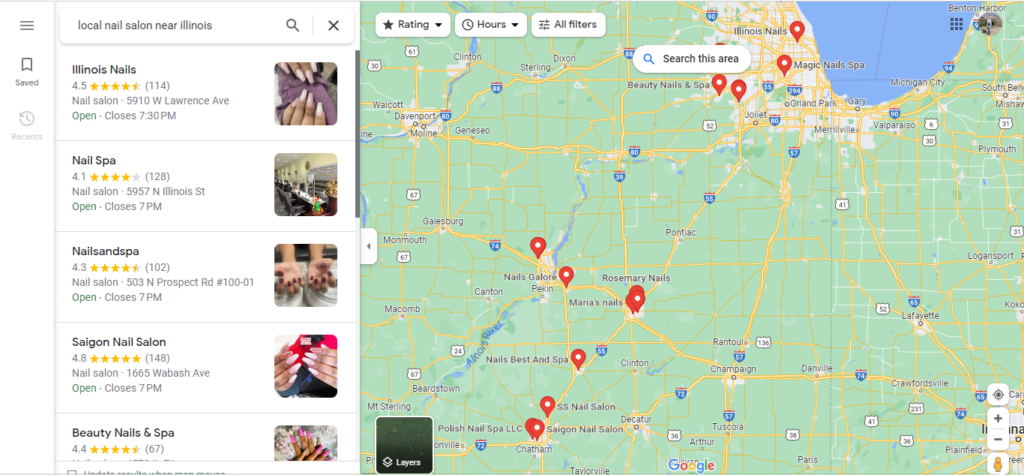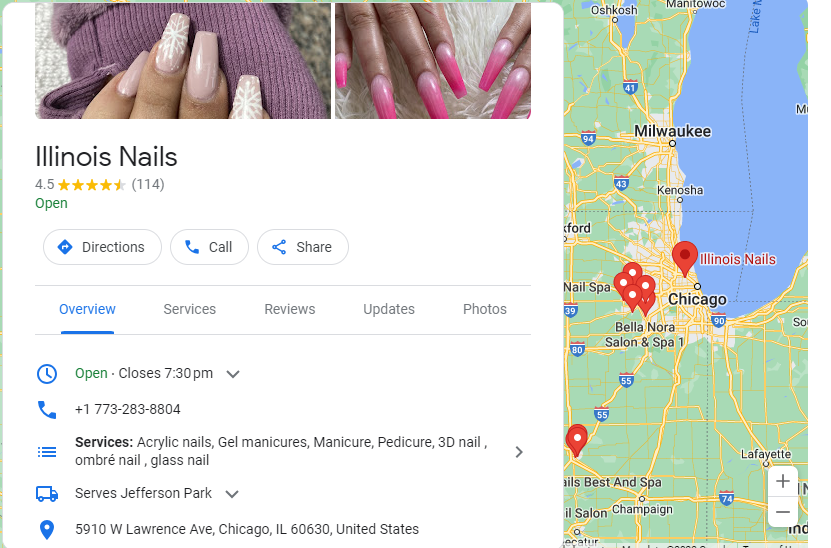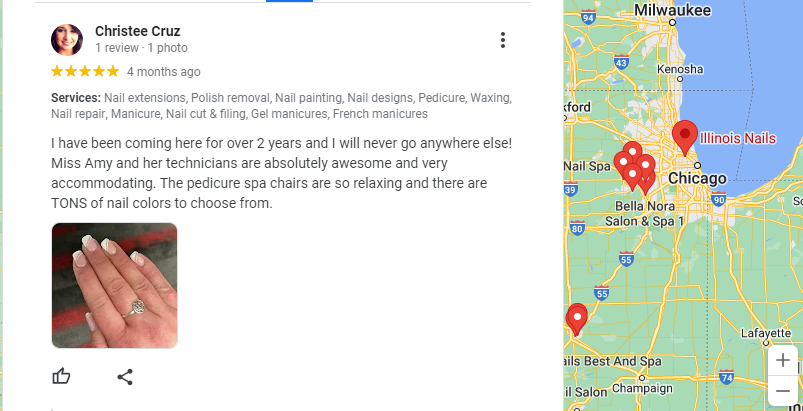Have you ever pondered how certain companies manage to rule their local marketplaces while others find it difficult to stand out? This is where hyperlocal SEO enters the picture, and let me tell you, it completely changes the game for your company.
What is Hyperlocal SEO?
Hyperlocal SEO is a search engine optimization strategy that aims to target local clients looking for nearby goods or services.
It helps maximize online presence for companies in certain geographic locations. Using this method, companies may engage with their nearby communities and stand out in local search results by customizing their content, keywords, and citations to extremely precise regions.
Why You Need Hyperlocal SEO for Your Business
Imagine that you own a quaint café or a boutique store. Your success depends on drawing in local clients, correct?

That’s exactly where local SEO excels. It focuses on localizing your online presence so you can engage with your local clients, who are the ones that count the most.
In other words, hyperlocal SEO assists in boosting your visibility.
You want to appear at the top of the search results when someone in your area searches for the goods or services you provide. By ensuring your company appears for those location-based queries, hyperlocal SEO gives you a huge advantage over rivals who may be located far away.
Think about it: You’re more inclined to hunt for close choices when you need something, whether it’s a quick haircut or a cup of coffee. That is precisely what your potential clients are doing too. By utilizing hyperlocal SEO, you’ll become their first option, which will result in an increase in foot traffic, leads, and revenue for your company.
However, there’s still more.
The goal of hyperlocal SEO goes beyond just appearing in search results. Additionally, it involves being accessible to clients during critical times.
Your company’s contact information, including your location, phone number, and business hours, will be readily available to customers with a well optimized Google My Business listing. They will find it to be super convenient, and you will benefit much.
Even better, hyperlocal SEO enables you to create a strong local presence and promote a sense of neighborhood.
One-time visitors will become devoted clients. Especially if you interact with neighborhood residents, demonstrate your participation in community events, and receive favorable feedback.
Related: Use Hyperlocal Social Media Marketing to Boost Your Local Business
How Hyperlocal SEO Differs from Traditional SEO?

When compared to the typical SEO that you may be familiar with, hyperlocal SEO is quite different. Although both have the same goal—improving internet visibility—the focus and strategy are different.
In conventional SEO, the objective is to rank higher on a larger scale, attracting a diverse audience that occasionally even crosses national boundaries.
If you run a worldwide e-commerce business selling fitness equipment, for instance, your SEO campaigns may focus on terms like “best fitness equipment” or “home workout gear.”
Hyperlocal SEO, on the other hand, focuses on a particular local region.
Think about running a bakery in New York City. For instance, your hyperlocal SEO approach might focus on optimizing for the terms “artisan bakery in NYC” and “fresh croissants in Manhattan.”
The audience and term specificity makes a significant influence. Your chances of winning their business increase when you use hyperlocal SEO to attract the attention of local consumers.
How to Use Hyperlocal SEO Step by Step

Now let’s get into the specifics of hyperlocal SEO and how to use it. The success of your local business depends on this stage, which will help you reach the proper customers and realize its full potential.
Step 1: Detect Geographical Keywords
The first step is to identify the regional keywords that are pertinent to your company and your target market.
Consider the search terms that prospective clients may use to find the goods or services you offer in your neighborhood.
If you own a boutique hotel in San Francisco, for instance, location-specific keywords may be “luxury hotel close to Golden Gate Bridge” or “boutique lodging in Union Square.”
Step 2: Make Use of Long-Tail Keywords for Local SEO
Here’s where the magic starts to happen.
Don’t limit your attention to broad terms. Use long-tail keywords that represent precise client inquiries about your industry.
You have a better chance of ranking higher in local searches because these terms have precise targeting and lower level of competition.
Using the boutique hotel as an example, you may use long-tail keywords like “romantic weekend getaway in Union Square” or “pet-friendly boutique hotel in San Francisco with rooftop view.”
Step 3: Examine Local Competition’s Keywords
It’s time to spy on the rivals—but for a good reason!
Search out the terms that your regional rivals are using to dominate the search results. You may find these untapped resources with the use of tools like SEMrush or Google Keyword Planner.
By comprehending their keyword approach, you may see chances to set your company apart from the competition and find undiscovered phrases that they could be skipping.
Keep in mind that hyperlocal keyword research is a continuous process.
You should regularly analyze and update your keyword list as search patterns shift and new local phrases appear. You can boost your hyperlocal SEO approach and establish yourself as the go-to option for local clients by using location-specific and long-tail keywords. This will help you remain one step ahead of your local competitors.
Go ahead and take control of the local search results now!
Step 4: Optimize Google My Business (GMB) Listing

Lay a strong basis for your local internet presence through optimization of your Google My Business (GMB) profile.
First things first, take charge of your company information by claiming and validating your GMB listing. Make sure all the information is correct and consistent across all platforms, including your address, phone number, and business hours.
Next, use captivating graphics to make a fantastic first impression.
Display top-notch photos and films that emphasize your goods, services, and the friendly environment of your company. These images will persuade potential clients to select you over your rivals.
Additionally, don’t undervalue the influence of consumer testimonials.
Request good evaluations from your pleased customers on your GMB listing. You can tell that you respect client feedback and are concerned about their experience by responding to both good and negative comments.
In addition to increasing your local search exposure, a thoroughly optimized GMB listing also helps you establish credibility with your audience.
Spend time honing your GMB presence, and watch as more neighborhood customers confidently locate and select your company.
Step 5: Create Location-Specific Landing Pages
Developing location-specific landing pages is a potent tactic to meet the particular requirements of various target areas.
Create these pages with local users in mind, speaking to their unique interests and preferences. To increase your content’s exposure in search results, customize it by adding relevant local keywords and phrases.
By emphasizing local endorsements and success stories, you can make your landing pages even more persuasive.
Build trust and credibility with potential consumers by showcasing positive testimonials from satisfied customers.
In addition, make sure that every location-specific landing page has consistent and correct local business citations, such as name, address, and phone number (NAP information). This information not only makes it simple for clients to discover you, but it also strengthens the local presence of your company.
You may engage clients on a more personal level and build a strong relationship with the communities you serve by developing location-specific landing pages with localized content. This can increase interest in and conversion rates for your company.
Step 6: Implement On-Page Hyperlocal SEO Strategies
Following steps are important for a solid on-page hyperlocal SEO:
- Use local keywords in meta tags and descriptions
- Get Local Business Information Using Schema Markup
- Include Internal Linking Structure Based on Location
- Optimize Your Website for Local Searchers on Mobile
To improve your local search ranks and draw in nearby clients, you must implement on-page Hyperlocal SEO methods. To tell search engines you are relevant locally, start by optimizing your meta tags and descriptions with location-specific keywords.
Use Schema markup to give search engines structured information about your local business, such as your address, phone number, and hours of operation. This not only boosts your search visibility but also increases the likelihood that you’ll show up in map packs and local search results.
Also include a framework for internal linking that is based on location. This helps direct visitors and search engines to relevant information in certain locations or neighborhoods. It delivers a fluid navigating experience for website visitors looking for local information.
In order to accommodate the rising number of mobile users looking for local companies while on the go, make sure your website is mobile-friendly. Improved user experience on a responsive website eventually increases foot traffic and conversions from local searchers.
Step 7: Local Citations and Online Directories
Online directories and local citations are essential for creating your company’s visibility in the neighborhood.

Determine the local citations and directories where your target market is most likely to look for goods and services comparable to yours.
The key is consistency. On all platforms, including your website, social media profiles, and local directories, make sure that your Name, Address, and Phone number (NAP) information is correct and consistent. This consistency increases your trust and aids search engines in validating the facts about your company.
Build citations on reputable local websites to increase your internet authority and visibility. These citations serve as a seal of approval for your company, boosting your local search ranks and drawing in additional prospective clients.
Keep a tight watch on the accuracy of your citations and check them frequently for any modifications or mistakes. Manage your citations proactively to deal with any inconsistencies as soon as they arise. Your reputation and trustworthiness are enhanced by accurate local citations, which makes it simpler for clients to locate and select your company in local searches.
You can position your company as a reputable local authority and increase exposure and trust in your target market by carefully maintaining your local citations and directories.
Step 8: Hyperlocal Content Marketing
A dynamic strategy for winning over your local audience and enhancing your brand’s visibility in the neighborhood is hyperlocal content marketing.
Create interesting, location-specific blog entries and articles that speak to the distinct interests and requirements of your neighborhood’s clients. You’ll become known as an authority in your field by providing insightful answers.
By including regional news and events, you can keep your content strategy current and relevant. Sharing news about neighborhood events not only promotes a sense of community but also establishes your company as an active player in neighborhood issues.
Expanding your reach by interacting with regional influencers and communities is a great idea. To spread the word about your brand, team up with notable people or local businesses.
To harness the power of true storytelling, promote locally relevant user-generated content. User-generated material encourages people to investigate your services by fostering trust and authenticity, whether it be through reviews, images, or testimonies from happy customers.
Step 9: Use Online Reviews for Hyperlocal SEO

Your hyperlocal SEO approach will change dramatically if you take use of internet reviews.
Positive customer testimonials are significant social proof that may persuade new clients to buy from you. Encourage pleased customers to post reviews on neighborhood review sites like Google, Yelp, or TripAdvisor. These reviews not only improve your online standing, but they also help you rank higher in local search results.
Equally important is swift and proper response to reviews. Positive evaluations should be acknowledged with thanks. Adopt a customer-centric strategy for unfavorable reviews. Empathize with their problems and provide suggestions to fix the problem.
Step 10: Hyperlocal Link Building Strategies

Building hyperlocal links is essential for increasing your local search exposure and establishing your authority in your neighborhood.
Collaborate and cross-promote with neighborhood companies to get reciprocal backlinks that help both parties’ web presences.
You can also guest post at local blogs and newspapers. This may demonstrate your knowledge while obtaining worthwhile backlinks from local authorities.
Additionally, establishing connections with local media outlets may lead to press mentions and coverage, creating strong backlinks and further establishing your standing as a trustworthy local company.
Tracking and Measuring Hyperlocal SEO Performance

To evaluate the efficacy of your techniques and pinpoint areas for improvement, it is important to track and monitor the performance of your hyperlocal SEO activities.
Start by using Google Analytics to learn more about regional traffic trends, such as the amount of visitors coming from particular areas and how they interact with your website.
To see how people find and use your company listing, keep an eye on Google My company (GMB) analytics. Analysze the information to improve the visibility of your GMB profile in local searches and map packs.
Keep a tight check on the performance of the search engine results page (SERP) and local keyword ranks. Monitoring your ranking for geographically specific keywords enables you to monitor your progress and modify your content and optimization tactics as necessary.
Last but not least, assess the ROI of your hyperlocal SEO activities. As a result of your efforts, track the effects on increased foot traffic, leads, and conversions. You may develop your hyperlocal SEO strategies and make data-driven decisions in order to achieve long-term success by routinely reviewing performance indicators.
Conclusion
In short, local companies may prosper in their areas by mastering hyperlocal SEO. Businesses may connect with nearby clients and increase their exposure by utilizing location-specific methods, connecting with the local audience, and optimizing online presence, eventually resulting in sustainable development and success.



